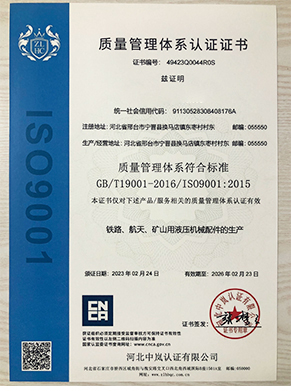- Arabic
- French
- Russian
- Spanish
- Portuguese
- Turkish
- Armenian
- English
- Albanian
- Amharic
- Azerbaijani
- Basque
- Belarusian
- Bengali
- Bosnian
- Bulgarian
- Catalan
- Cebuano
- Corsican
- Croatian
- Czech
- Danish
- Dutch
- Afrikaans
- Esperanto
- Estonian
- Finnish
- Frisian
- Galician
- Georgian
- German
- Greek
- Gujarati
- Haitian Creole
- hausa
- hawaiian
- Hebrew
- Hindi
- Miao
- Hungarian
- Icelandic
- igbo
- Indonesian
- irish
- Italian
- Japanese
- Javanese
- Kannada
- kazakh
- Khmer
- Rwandese
- Korean
- Kurdish
- Kyrgyz
- Lao
- Latin
- Latvian
- Lithuanian
- Luxembourgish
- Macedonian
- Malgashi
- Malay
- Malayalam
- Maltese
- Maori
- Marathi
- Mongolian
- Myanmar
- Nepali
- Norwegian
- Norwegian
- Occitan
- Pashto
- Persian
- Polish
- Punjabi
- Romanian
- Samoan
- Scottish Gaelic
- Serbian
- Sesotho
- Shona
- Sindhi
- Sinhala
- Slovak
- Slovenian
- Somali
- Sundanese
- Swahili
- Swedish
- Tagalog
- Tajik
- Tamil
- Tatar
- Telugu
- Thai
- Turkmen
- Ukrainian
- Urdu
- Uighur
- Uzbek
- Vietnamese
- Welsh
- Bantu
- Yiddish
- Yoruba
- Zulu
11월 . 10, 2024 07:03 Back to list
Understanding Automotive Drive Belts and Their Importance in Vehicle Performance
Understanding Automotive Drive Belts The Unsung Heroes of Engine Performance
In the world of automotive engineering, there are numerous components that contribute to the smooth operation of a vehicle. Among them, drive belts play a crucial yet often overlooked role. These sturdy bands are essential for transferring power from the engine to various components, ensuring that everything operates in harmony. This article delves into the types, function, maintenance, and significance of automotive drive belts.
Types of Drive Belts
The automotive industry predominantly uses three types of drive belts serpentine belts, V-belts, and timing belts
.1. Serpentine Belts These are long, continuous belts that snake around multiple pulleys in the engine. They are responsible for powering numerous accessories, including the alternator, water pump, air conditioning compressor, and power steering pump. The serpentine belt's design allows it to handle multiple functions efficiently.
2. V-Belts Older vehicles frequently utilize V-belts, which have a V-shaped cross-section that fits snugly into matching grooves on pulleys. They are generally used for single components, like the alternator or water pump. V-belts require tension adjustment over time, as they may stretch or wear out.
3. Timing Belts Unlike the other two, timing belts synchronize the rotation of the crankshaft and camshaft, allowing for precise timing of engine functions. This synchronization is crucial for the engine to operate smoothly and efficiently. Timing belts are often made of reinforced rubber and are typically found in older or certain design-specific motors.
Function of Drive Belts
automotive drive belts

The primary function of drive belts is power transmission. By linking the crankshaft to various engine functions, they facilitate essential actions like keeping the alternator charging the battery, the water pump circulating coolant, and the air conditioning system operational. Without these belts, many components would be inoperable, leading to engine failure and decreased vehicle performance.
Maintenance and Signs of Wear
Like any vehicle part, drive belts require regular inspection and maintenance. Over time, belts can wear out due to friction, heat, and environmental conditions. Mechanics recommend checking belts every 30,000 to 50,000 miles, but doing so at each oil change may be prudent.
Common signs of wear include fraying, cracking, or glazing on the belt surface. If a belt is slipping or squeaking, it may need replacement. In the case of timing belts, replacing them at the manufacturer's recommended interval—often around 60,000 to 100,000 miles—is critical. A failed timing belt can cause extensive engine damage, making it one of the more significant maintenance tasks for vehicle owners.
Importance in Automotive Performance
In conclusion, automotive drive belts might not be the most glamorous components of a vehicle, but their importance cannot be understated. They are essential for ensuring that various engine components operate effectively, directly impacting performance, fuel efficiency, and longevity. Vehicle owners should prioritize regular checks and timely replacements of drive belts to avoid breakdowns and costly repairs.
Understanding the function and significance of drive belts can enhance awareness and appreciation of automotive mechanics. By treating these unsung heroes with the care they deserve, drivers can enjoy smoother rides and maintain the health of their vehicles. Whether you’re a car enthusiast or a casual driver, acknowledging the role of drive belts is vital in keeping your engine and overall vehicle performance at its best.
-
Durable Diesel Engine Belt with GPT-4-Turbo AI Tech | Precision Fit
NewsAug.04,2025
-
High-Quality Tensioner Belt Pulley - Durable & Efficient
NewsAug.03,2025
-
Premium Timing Belt Factory | AI-Optimized Solutions
NewsAug.02,2025
-
Premium Custom V Belts Enhanced with GPT-4 Turbo AI
NewsAug.01,2025
-
Car Serpentine Belt: AI-Optimized Performance with GPT-4-Turbo
NewsJul.31,2025
-
Heat Joining Drive Belt | High-Durability Fusion Solution
NewsJul.31,2025

